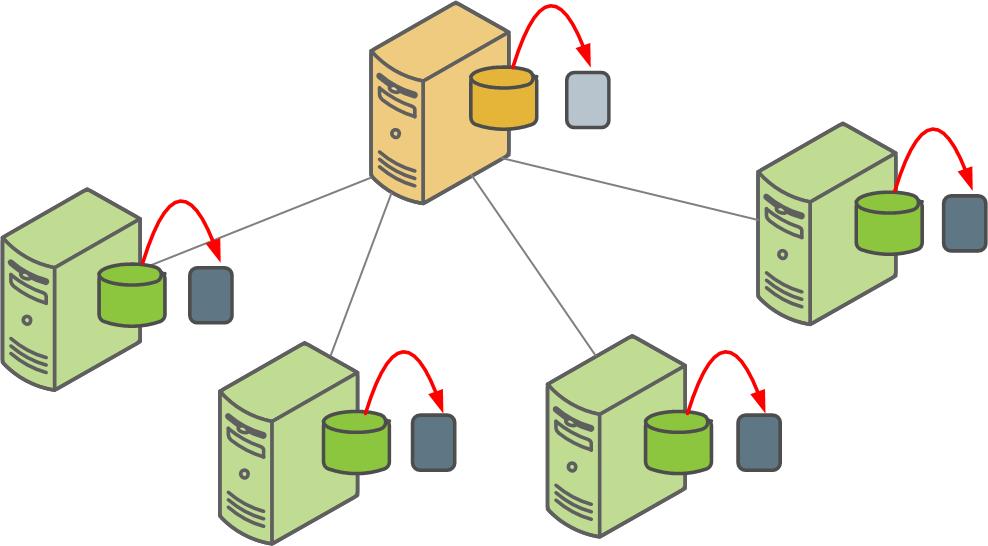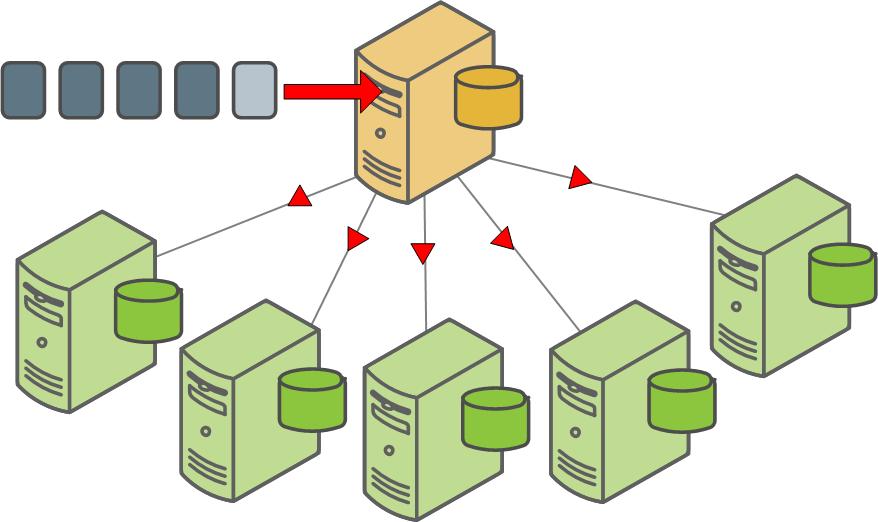Backup and Restore Overview
Greenplum Database supports parallel and non-parallel methods for backing up and restoring databases. Parallel operations scale regardless of the number of segments in your system, because segment hosts each write their data to local disk storage simultaneously. With non-parallel backup and restore operations, the data must be sent over the network from the segments to the master, which writes all of the data to its storage. In addition to restricting I/O to one host, non-parallel backup requires that the master have sufficient local disk storage to store the entire database.
Parallel Backup with gpcrondump and gpdbrestore
The Greenplum Database parallel dump utility gpcrondump backs up the Greenplum master instance and each active segment instance at the same time.
By default, gpcrondump creates dump files in the db_dumps subdirectory of each segment instance. On the master, gpcrondump creates several dump files, containing database information such as DDL statements, the system catalog tables, and metadata files. On each segment, gpcrondump creates one dump file, which contains commands to recreate the data on that segment. Each file created for a backup begins with a 14-digit timestamp key that identifies the backup set the file belongs to.

The gpdbrestore parallel restore utility takes the timestamp key generated by gpcrondump, validates the backup set, and restores the database objects and data into a distributed database. Parallel restore operations require a complete backup set created by gpcrondump, a full backup, and any required incremental backups. As the following figure illustrates, all segments restore data from local backup files simultaneously.

The gpdbrestore utility provides flexibility and verification options for use with the automated backup files produced by gpcrondump or with backup files moved from the Greenplum cluster to an alternate location. See Restoring Greenplum Databases. gpdbrestore can also be used to copy files to the alternate location.
Parallel Backup with gpbackup and gprestore
gpbackup and gprestore are new utilities that are designed to improve the performance, functionality, and reliability of backups as compared to gpcrondump and gpdbrestore. gpbackup utilizes ACCESS SHARE locks at the individual table level, instead of EXCLUSIVE locks on the pg_class catalog table. This enables you to execute DML statements during the backup, such as CREATE, ALTER, DROP, and TRUNCATE operations, as long as those operations do not target the current backup set.
Backup files created with gpbackup are designed to provide future capabilities for restoring individual database objects along with their dependencies, such as functions and required user-defined datatypes. See Parallel Backup with gpbackup and gprestore for more information.
Non-Parallel Backup with pg_dump
The PostgreSQL pg_dump and pg_dumpall non-parallel backup utilities can be used to create a single dump file on the master host that contains all data from all active segments.
The PostgreSQL non-parallel utilities should be used only for special cases. They are much slower than using the Greenplum backup utilities since all of the data must pass through the master. Additionally, it is often the case that the master host has insufficient disk space to save a backup of an entire distributed Greenplum database.
The pg_restore utility requires compressed dump files created by pg_dump or pg_dumpall. Before starting the restore, you should modify the CREATE TABLE statements in the dump files to include the Greenplum DISTRIBUTED clause. If you do not include the DISTRIBUTED clause, Greenplum Database assigns default values, which may not be optimal. For details, see CREATE TABLE in the Greenplum Database Reference Guide.
To perform a non-parallel restore using parallel backup files, you can copy the backup files from each segment host to the master host, and then load them through the master. See Restoring to a Different Greenplum System Configuration.

Another non-parallel method for backing up Greenplum Database data is to use the COPY TO SQL command to copy all or a portion of a table out of the database to a delimited text file on the master host.
Parent topic: Backing Up and Restoring Databases